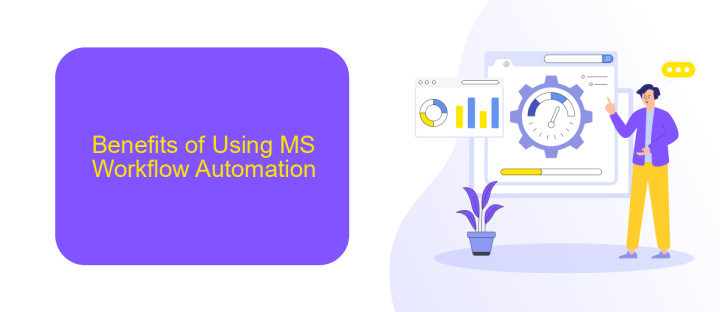MS Workflow Automation
In today's fast-paced business environment, efficiency is key. Microsoft Workflow Automation offers a powerful solution to streamline processes, reduce manual tasks, and enhance productivity. By leveraging advanced tools like Power Automate, businesses can automate repetitive workflows, integrate various applications, and ensure seamless operations. This article explores the benefits, features, and implementation strategies of MS Workflow Automation to help you optimize your organizational processes.
Introduction to MS Workflow Automation
Microsoft Workflow Automation is a powerful tool designed to streamline and optimize business processes by automating repetitive tasks and workflows. It allows organizations to improve efficiency, reduce errors, and ensure consistency across various operations.
- Automates repetitive tasks to save time
- Ensures consistency and accuracy in workflows
- Integrates with various Microsoft and third-party applications
- Enhances collaboration and communication among team members
One of the key features of MS Workflow Automation is its ability to integrate seamlessly with other services and applications. For instance, using platforms like ApiX-Drive, businesses can easily connect their Microsoft workflows with various third-party services, enabling smooth data transfer and synchronization. This integration capability ensures that all aspects of the workflow are connected and functioning efficiently, leading to better overall performance and productivity.
Benefits of Using MS Workflow Automation

Implementing MS Workflow Automation significantly enhances operational efficiency by automating repetitive tasks, allowing employees to focus on higher-value activities. This streamlining of processes reduces the likelihood of human error, ensures consistency, and accelerates task completion times. Furthermore, the centralized management of workflows facilitates better monitoring and control, providing valuable insights into process performance and areas for improvement.
Another key benefit is the seamless integration capabilities with various tools and services, such as ApiX-Drive, which simplifies the connection between different applications. This integration ensures that data flows smoothly across platforms, eliminating the need for manual data entry and reducing the risk of discrepancies. By leveraging these integrations, organizations can create more cohesive and efficient workflows, ultimately leading to improved productivity and better resource allocation.
How to Implement MS Workflow Automation

Implementing MS Workflow Automation involves a series of steps to streamline and optimize your business processes. Begin by identifying the specific tasks and workflows that would benefit from automation. This will help you focus on areas where automation can provide the most value.
- Define your workflow requirements and objectives.
- Choose the right tools and software, such as Microsoft Power Automate.
- Design your workflow by mapping out each step and decision point.
- Integrate necessary applications and services, utilizing tools like ApiX-Drive for seamless data transfer.
- Test your automated workflow thoroughly to ensure it performs as expected.
- Deploy the workflow and monitor its performance, making adjustments as needed.
By following these steps, you can effectively implement MS Workflow Automation and enhance your organization's efficiency. Utilizing integration services like ApiX-Drive can simplify the process, allowing for smooth data flow between different applications and systems, further optimizing your automated workflows.
Case Studies and Success Stories

One of the leading companies in the healthcare industry, MedTech Solutions, successfully implemented MS Workflow Automation to streamline their patient data management. By automating repetitive tasks, they reduced manual errors and improved overall efficiency, resulting in significant cost savings.
Another notable example is Tech Innovators, a software development firm that leveraged MS Workflow Automation to enhance their project management processes. They integrated various tools and platforms, including ApiX-Drive, to ensure seamless data flow and real-time updates, leading to better project tracking and timely deliveries.
- MedTech Solutions: Improved patient data management and reduced manual errors.
- Tech Innovators: Enhanced project management with seamless tool integration.
- Retail Giant: Optimized inventory management and order processing.
These success stories highlight the versatility and effectiveness of MS Workflow Automation across different industries. By adopting automation solutions, businesses can not only save time and resources but also achieve higher accuracy and productivity. Whether it's healthcare, software development, or retail, the benefits of MS Workflow Automation are evident and transformative.
- Automate the work of an online store or landing
- Empower through integration
- Don't spend money on programmers and integrators
- Save time by automating routine tasks
Conclusion
In conclusion, MS Workflow Automation stands as a robust solution for streamlining business processes and enhancing operational efficiency. By automating repetitive tasks, it allows organizations to focus on more strategic activities, thereby driving productivity and growth. The integration capabilities of MS Workflow Automation ensure seamless connectivity with various other systems and platforms, making it a versatile tool in any business environment.
For businesses looking to further enhance their workflow automation, services like ApiX-Drive offer valuable support. ApiX-Drive simplifies the process of integrating different applications, ensuring that data flows smoothly between systems without the need for extensive manual intervention. By leveraging such tools, companies can achieve a higher level of automation, reduce errors, and save valuable time. Ultimately, MS Workflow Automation, complemented by integration services like ApiX-Drive, provides a comprehensive approach to optimizing business processes and driving efficiency.
FAQ
What is MS Workflow Automation?
How can I get started with MS Workflow Automation?
What types of tasks can be automated with MS Workflow Automation?
Can I integrate third-party applications with MS Workflow Automation?
Is coding knowledge required to use MS Workflow Automation tools?
Time is the most valuable resource in today's business realities. By eliminating the routine from work processes, you will get more opportunities to implement the most daring plans and ideas. Choose – you can continue to waste time, money and nerves on inefficient solutions, or you can use ApiX-Drive, automating work processes and achieving results with minimal investment of money, effort and human resources.


